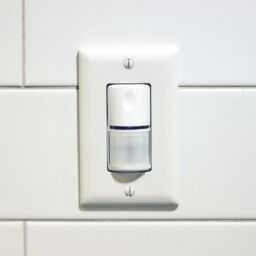Short for fluorinated ethylene propylene, FEP cable has many applications, and there are several advantages associated with using FEP cable over other types of cable. Let’s take a look at some of these uses and benefits in further detail, specifically examining why FEP may be equivalent, or even superior, to Polytetrafluoroethylene (PTFE).
Advantage #1 of FEP Cable – Fluorinated ethylene propylene’s corrosion resistance is exactly on par with PTFE’s. As a result, it stands up to caustic agents in the same way. Its pure carbon-fluorine structure and its fluorination enable it to resist corrosive situations. In particular, FEP coated cable withstands exposure to detergents far better than PTFE does.
Advantage #2 of FEP Cable – Fluorinated ethylene propylene has a lower melting point than other cable materials like PTFE and PFA. The exact point hovers at around 260°C (500°F).
Advantage #3 of FEP Cable – Electrically speaking, only PFA outdoes fluorinated ethylene propylene. That means the material has one of the highest dielectric strengths available. At the same time, FEP dissipates at a rate that is six times that of PFA. The end result is that FEP better conducts electrostatic fields non-linearly.
Advantage #4 of FEP Cable – In terms of its flexibility, fluorinated ethylene propylene holds a slight edge over PTFE, giving it a small leg up in the mechanical department.
Advantage #5 of FEP Cable – When cable leads are made of FEP, they exhibit outstanding chemical, fluid, age and ozone resistance.
Advantage #6 of FEP Cable – Fluorinated ethylene propylene allows for a smaller diameter.
Advantage #7 of FEP Cable – When a torque-free design is incorporated into the cable, the memory that is typically found in right hand or left hand twisted cables is eliminated.
As might be imagined it is precisely this cable’s benefits that render it ideal for certain applications. Some of these situations include:
Application #1 for FEP Film/Cable: Wiring – Think wire used for hookup, coaxial cables, computer wiring, and technical gear wiring.
Application #2 for FEP Film/Cable: Aerospace – In this application, fluorinated ethylene propylene film helps protect molds during the curing process.
Application #3 for FEP Film/Cable: Labware and Tubing – The highly corrosive chemical processes that often occur in the lab can do a number on plastic labware and tubing. FEP provides excellent resistance against such attacks.
Application #4 for FEP Film/Cable: Industrial High Temperature Applications (e.g., glass plants, boiler locations, chemical processing plants, areas close to steam lines) – When multiple conductor cables are insulated and jacketed with fluorinated ethylene propylene, resistance to abrasion and mechanical abuse reaches a maximum. Moisture and fluid damage is also mitigated.
Dupont, the manufacturer of FEP, also lists these applications for the product:
- Wire and cable insulation, small tubing and injection molded parts
- Extruded or moulded components for the chemical industry; jackets for wire and cable applications demanding a high degree of stress crack resistance
- Telecommunication cable jacketing
- Industrial film
- Fabric and film coating; heat sealable top coatings for PTFE coated fabrics used for belting, circuit boards or electrical insulation, cast film and as hot melt adhesive for bonding molded PTFE or FEP
BY by GAHZLY
#FEP #Cables #Advantages





